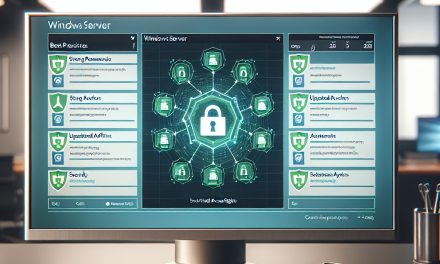Introduction
In today’s ever-evolving threat landscape, Active Directory (AD) is a critical component of most enterprise IT infrastructures. It is the backbone for identity management, user authentication, and access control. However, with such importance comes the responsibility to secure it effectively. One of the best practices for enhancing AD security is implementing a Tiered Administration Model. This article explores the concepts, benefits, and steps for effectively deploying a tiered administration strategy in your Active Directory environment.
Understanding the Tiered Administration Model
The Tiered Administration Model introduces layers of administrative access based on the criticality and sensitivity of the resources managed. It minimizes the risk of credential theft and limits the scope of administrative privileges, ensuring that only authorized personnel can access specific resources.
The Three-Tier Model
-
Tier 0 – Domain Admins and Forest Admins: This tier comprises the highest level of access, often referred to as Domain Admins or Enterprise Admins. Administrators in this tier have full control over Active Directory and all resources within it, making them a prime target for attackers. Their access should be restricted to only necessary actions within this highly sensitive tier.
-
Tier 1 – Server Administration: This tier includes administrators responsible for managing servers, applications, and services. They manage resources like file servers, application servers, and other essential infrastructure components. Access in this tier should be limited to roles necessary for performing tasks without exposing Tier 0 resources.
- Tier 2 – User Administration: The lowest tier is focused on user management. Administrators here can handle day-to-day tasks such as creating and managing user accounts, applying group policies, and managing local resources. This tier has the least privilege needed for user management tasks, further reducing the potential attack surface.
Benefits of the Tiered Administration Model
Implementing a tiered administration model has multiple benefits:
-
Reduced Attack Surface: By minimizing access levels, organizations can significantly reduce the number of potential entry points for attackers.
-
Limit Credential Theft: If an administrator’s credentials are compromised in Tier 2, attackers gain limited access without the ability to escalate further to Tier 0 resources.
-
Controlled Environment: Separation of duties allows organizations to enforce policies and control activities within each tier, mitigating risks associated with insider threats.
- Ease of Management: Assigning administrators to specific tiers simplifies governance and ensures that only those with appropriate skills are granted access.
Steps to Implement the Tiered Administration Model
Implementing a tiered administration model requires careful planning and execution. Below are the steps to consider:
Step 1: Assess Current Access Levels
Conduct an audit of current administrative access levels within your Active Directory environment. Identify existing roles, responsibilities, and access rights.
Step 2: Define Roles and Responsibilities
Clearly define what roles are necessary for each tier. Establish guidelines for what tasks each tier can perform.
Step 3: Establish Control Policies
Create policies that govern access rights and responsibilities for each tier. Make sure these policies align with organizational security objectives.
Step 4: Implement Least Privilege
Adopt a least privilege approach by granting only the minimum access necessary for administrators to perform their tasks at each tier.
Step 5: Use Security Tools
Utilize security monitoring tools that provide visibility into administrative activities across all tiers. Regular log reviews can help identify unauthorized attempts at access.
Step 6: Regularly Review Access Rights
Establish a periodic review process to ensure that administrative access is justified, roles are effectively managed, and any stale accounts are disabled.
Step 7: Conduct Training
Provide training sessions for administrators to understand their roles within the tiered model and educate them on best practices for security.
Conclusion
Implementing a Tiered Administration Model for Active Directory security is a proactive measure to shield your organization from potential threats. By segmenting administrative roles and enforcing strict access controls, you not only protect your critical assets but also foster a culture of security awareness among your IT staff. As cyber threats continue to evolve, adopting advanced security practices like tiered administration is vital for any organization looking to strengthen its defenses.
For more insights and advancements in IT security, stay tuned to WafaTech Blogs!





